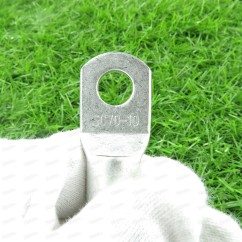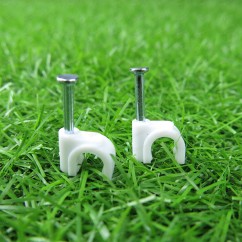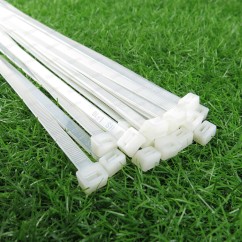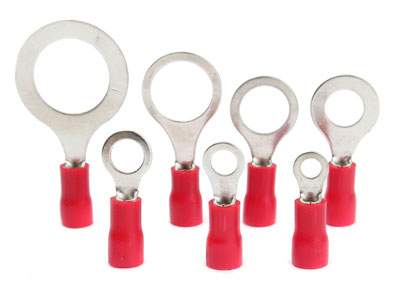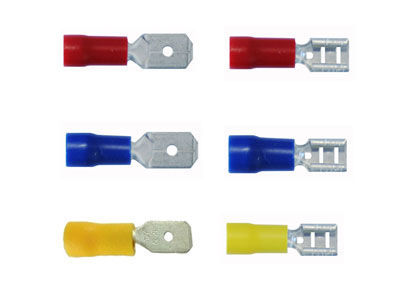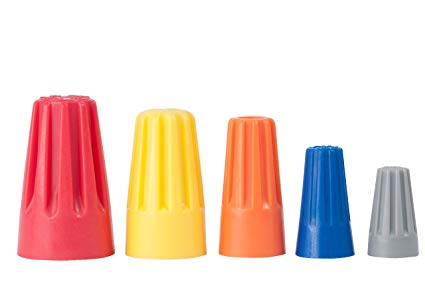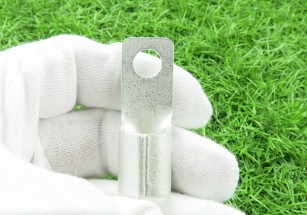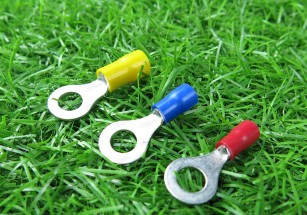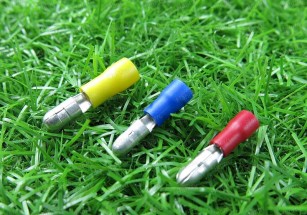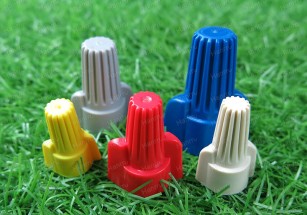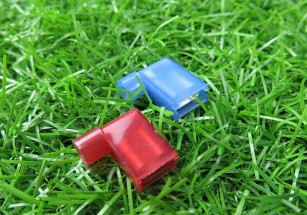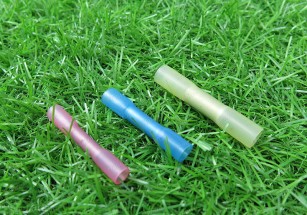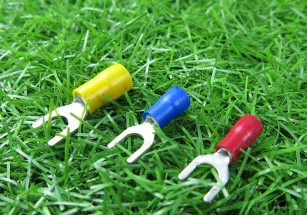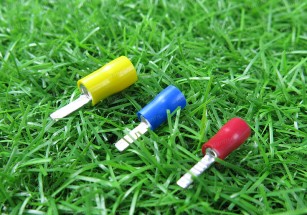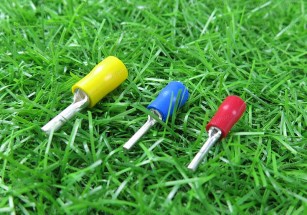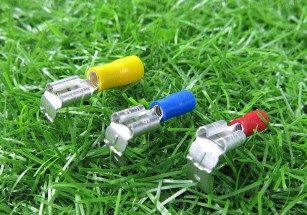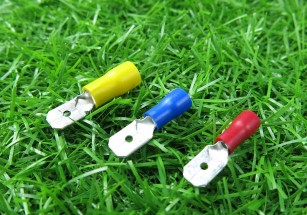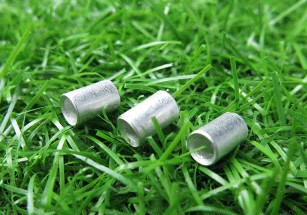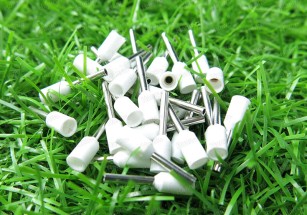Wire Terminals is a device used to join electrical terminations and create an electrical circuit. Wire Terminals consist of plugs (male-ended) and jacks (female-ended). The connection may be temporary, as for portable equipment, require a tool for assembly and removal, or serve as a permanent electrical joint between two wires or devices.
Hundreds of types of Wire Terminals are manufactured for power, signal and control applications. Connectors may join two lengths of flexible copper wire or cable, or connect a wire or cable to an electrical terminal.
Ring Terminals and Spade Terminals
The connectors in the top row of the image are known as ring terminals and spade terminals (sometimes called fork or split ring terminals). Electrical contact is made by the flat surface of the ring or spade, while mechanically they are attached by passing a screw or bolt through them. The spade terminal form factor facilitates connections since the screw or bolt can be left partially screwed in as the spade terminal is removed or attached. Their sizes can be determined by the size of the conducting wire AWG and the screw/bolt diameter size designation
Blade Terminals
Blade Terminals are a type of single wire connection using a flat conductive blade which is inserted into a blade receptacle. Usually both blade connector and blade receptacle have wires attached to them either through of the wire to the blade or crimping of the blade to the wire. In some cases the blade is an integral manufactured part of a component (such as a switch or a speaker unit), and a blade receptacle is pushed onto the blade to form a connection.
Common types of blade terminals are the Faston connectors and Lucar connectors. While Faston is a trademark of TE Connectivity (formerly Tyco Electronics), it has come into common usage. Faston connectors come in male and female types. They have been commonly used since the 1970s
Twist-On Wire Connectors
In North American building wiring, Twist-On Wire Connectors are frequently used in low-voltage power circuits for wires up to about #10 AWG in size. These allow wire connections in electrical boxes that are more quickly installed than the obsolete practice of soldering and taping wires

 Contact
Contact CN
CN